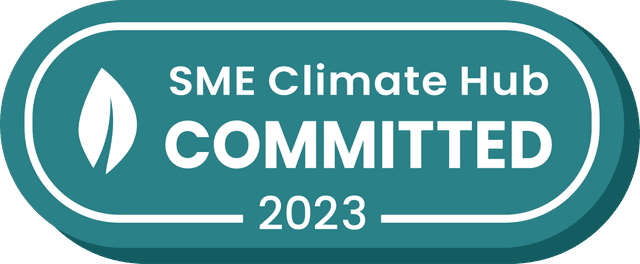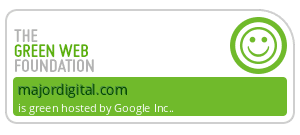How is AI Shaping the Future of Creative Jobs?
)
By Martyn McDermott
5 min read
)
As AI continues to blow our minds with its rapid evolution, its impact on the creative industries sparks intense debate. Is it the grim reaper for creative businesses? Will designers and developers be booted out by robot overlords?
There's no doubt about it, from rapidly generating images to predicting user interactions and plugging accessibility gaps, AI tools promise to rock our workflows. However, a lot of us are finding the reality of integrating AI into our creative processes challenging, and frankly, a little underwhelming.
The Promise and Reality of AI Tools
AI definitely has the potential to transform the way we deliver our creative work. Tools that automate routine tasks, generate initial concepts or wireframes, and provide data-driven insights can significantly enhance productivity. For instance, AI tools we've played with can already whip up half-decent layouts, automate workflows, and even predict user interactions. These capabilities give us more hours in the day, hours our designers can use to focus on more strategic and creative aspects of their projects.
However, AI tools are not yet a panacea for all design challenges and nowhere near it for development challenges. High-stakes projects still need the human touch, the nuance that only comes from years of getting it wrong before getting it right.
Navigating Psychological Impacts
The rise of AI brings a new kind of existential dread—will we be out of jobs, left to reminisce about the good old days of manual design and hand-coding like a bunch of tech dinosaurs? Designers and developers are sweating bullets, wondering if their skills will go the way of the fax machine. But let's take a deep breath and look at history. Technological shifts—from the dawn of the web to the rise of social media and mobile-apps—have always shaken things up. And guess what? We adapted, evolved, and came out the other side with more diverse roles and higher demand for our talents. The same will happen with AI. It's not about job loss; it's about job evolution.
Consider the emergence of social media influencers, a job that didn't exist before the rise of platforms like Instagram and YouTube. This is a prime example of how technology can create entirely new career paths and industries. Similarly, AI and automation are not just eliminating jobs but transforming and creating new ones. The World Economic Forum predicts the creation of 69 million new jobs by 2027 due to technological advancements.
So, no need to panic—just stay nimble and curious, like a cat with a knack for coding.
The Importance of Human Creativity
At the heart of creative industries lies human ingenuity, experimentation, and a touch of madness—creativity is not just about connecting the dots; it's about seeing the dots that others miss, or even adding new dots of our own. AI? It's a glorified dot-to-dot player, mimicking patterns and playing it safe within its programmed boundaries. It lacks the spark, the madness, the "let's break everything and see what happens" attitude that makes human creativity so damn special. So, while AI can help colour within the lines, only humans can decide to scribble all over the page and create a masterpiece.
Embracing Strategic Thinking
One of the key adaptations to make in an AI-driven world is a shift towards more abstract and strategic thinking. Let AI handle the tedious tasks while you focus on the grand vision, the high-level problem-solving that AI can't touch. Develop those strategic insights and keep pushing the envelope.
Creatives and marketers who can dance with AI will be the rock stars of this new era. Embrace AI, adapt, and keep sharpening both your creative and technical skills—because that's always been the recipe for staying ahead.
Implications for Our Clients
As a Creative Headless CMS Agency, the integration of AI into our workflows means significant benefits for our clients. With AI catalysing our workforce, we can offer:
Faster Turnaround Times: Automation of routine tasks allows us to wrap-up projects quicker without compromising on quality.
Enhanced Precision: AI tools provide data-driven insights that improve the accuracy of design elements, such as user interaction predictions and accessibility enhancements.
Cost Efficiency: Increased productivity and streamlined workflows result in cost savings that we can pass on to our clients.
Innovative Solutions: By freeing up our creative professionals from mundane tasks, AI enables them to focus on more innovative and strategic aspects of projects, delivering unique and ground-breaking solutions.
Continuous Improvement: AI's ability to learn and improve over time means that our services get better and better, keeping clients ahead of the game.
In conclusion, don't fear AI—embrace it. Stay curious, stay adaptable, and keep those creative juices flowing. Together, we'll not only survive but thrive, delivering unparalleled value to our customers and setting new standards in the creative industries.
I'm bullish about AI on a personal and societal level too. It's the first technology that's capable of making us less-busy-fools. If we use it wisely (not something we're collectively good at unfortunately, social media anyone!!)
My hope for AI is that it reverses the Googlisation of our brains that's happened over the past 20 years. The clear degradation of our limits of memory and concentration because it's just easier to ask an algorithm or an app. If we can resist the temptation to use the hours freed by AI for more busyness and instead use them for more cerebral activity, the net effect will be a universal level of enhanced creativity, and that can only be a good thing for the human race! We might actually solve climate change?
&w=64&q=10)
&w=64&q=10)



